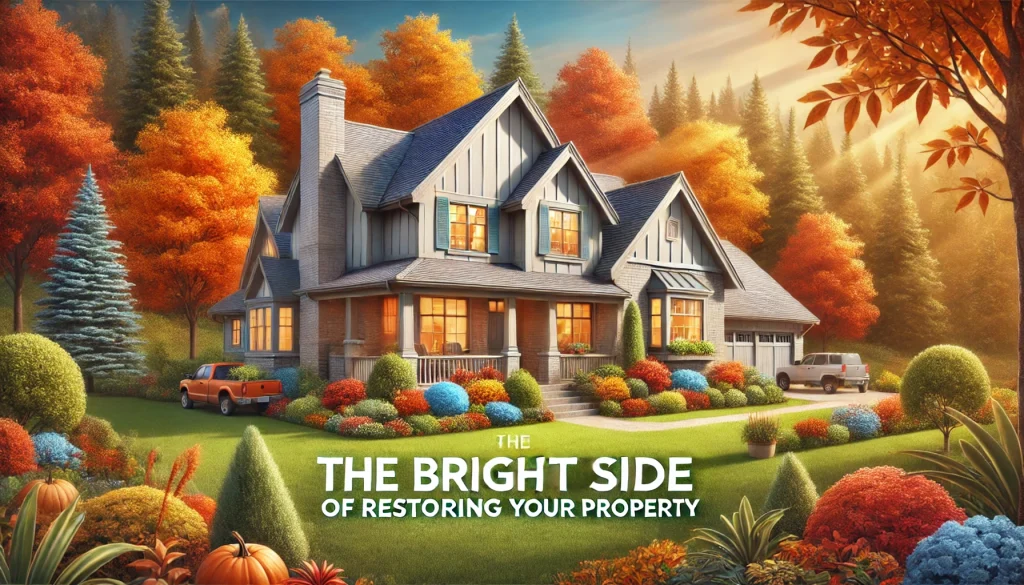Restoring your property can be a rewarding journey, but it’s not without its hurdles. Understanding the pros and cons of home restoration projects can help you Restoring your property can be a rewarding journey, but it’s not without its hurdles. Understanding the pros and cons of home restoration projects can help you make informed decisions, avoid pitfalls, and maximize the potential of your property. Whether you’re restoring after damage or simply revitalizing an older home, this guide highlights the advantages and challenges to consider.
The Bright Side of Restoration
1. Preserving the Charm and Character
Restoration allows you to retain the unique features and architectural details that make your home special. Watch this YouTube video on restoring historic charm to gain insights into how professionals preserve architectural beauty while updating functionality. Original wood floors, crown moldings, and vintage fixtures often add character and value to your property. For many homeowners, historic home restoration provides a chance to preserve legacy while enjoying modern living.
Pro Tip: Use resources like Saving Places for tips on maintaining historic authenticity while making modern updates.
Preserving architectural charm can also provide a unique selling point if you decide to list your home. Potential buyers are often drawn to the craftsmanship and historical value embedded in restored properties.
2. Boosting Property Value
A well-restored property often increases in value. Energy-efficient upgrades, structural repairs, and aesthetic improvements make your home more appealing to future buyers. Potential buyers frequently value energy-efficient home restoration efforts that lower long-term costs. Additionally, improved curb appeal and functional upgrades can result in higher appraisal values.
Pro Tip: Explore Energy Star for ideas on energy-efficient improvements that also enhance resale value.
If you’re restoring a property for rental purposes, these upgrades can also allow you to command higher rental rates and attract long-term tenants.
4. Sustainability and Eco-Friendliness
Restoration is a sustainable choice compared to demolition and rebuilding. By reusing materials and improving energy efficiency, you contribute to environmental conservation. Sustainable home restoration also aligns with eco-conscious living trends. Restored homes that use sustainable materials can qualify for green certifications, which are attractive to environmentally conscious buyers.
Pro Tip: Check out Green Building Advisor for ideas on eco-friendly restoration materials and techniques.
5. Enhancing Curb Appeal
Restoration doesn’t stop at the interior. Updating your home’s exterior through landscaping, painting, or siding repairs can dramatically improve its curb appeal and value. First impressions matter, and a polished exterior is key to attracting potential buyers or simply creating a welcoming home.
Curb appeal also includes functional upgrades, such as repairing roofs, gutters, and driveways, which protect your home from weather-related damage and improve its overall aesthetic.
Pro Tip: Use HGTV’s curb appeal guide for practical ideas to enhance your home’s exterior.
The Challenges of Restoration
1. Hidden Costs and Surprises
Restoration projects often uncover unexpected issues, such as structural damage, mold, or outdated electrical systems. These can quickly inflate your budget. Addressing hidden issues is critical for successful residential restoration. Even minor problems like outdated plumbing can result in costly repairs if not identified early.
Pro Tip: Set aside a contingency fund—typically 10-20% of your total budget—to cover unforeseen expenses.
Consult with professional inspectors to identify potential hidden costs before starting the restoration process. A detailed pre-restoration inspection can save time and money.
2. Lengthy Timelines
Restoration can take longer than anticipated, especially when dealing with permits, inspections, or specialized repairs. Homeowners often underestimate the time required for significant restoration projects. Delays in material delivery or contractor availability can also add weeks to the timeline.
Pro Tip: Work with experienced contractors and create a realistic timeline. Communicate regularly to address delays or changes.
Be prepared for setbacks and factor in extra time for unforeseen challenges, especially if restoring an older or historic property.
3. Balancing Modern Needs with Original Features
Preserving the charm of your property while incorporating modern amenities can be tricky. Striking the right balance requires careful planning. For example, updating electrical systems while maintaining the integrity of vintage light fixtures can be challenging but rewarding.
Pro Tip: Use resources like Family Handyman for advice on blending modern updates with historic features.
Balancing aesthetics with functionality ensures that your home meets contemporary standards without losing its original appeal.
4. Stress and Disruption
Living in a home during restoration can be stressful, with noise, dust, and limited access to certain areas. Managing home restoration stress is key to maintaining your sanity. For families, the disruption can also impact daily routines and activities.
Pro Tip: If possible, schedule work in phases or temporarily relocate during major renovations to minimize disruption.
Consider setting up a dedicated living area separate from active restoration zones to maintain comfort during the project.
Tips for a Successful Restoration
- Hire Trusted Professionals: Work with certified contractors to ensure quality results. Use directories like the IICRC’s Global Locator to find qualified experts.
- Document Everything: Take photos, keep receipts, and maintain detailed records for insurance claims and project tracking. Learn more about filing insurance claims to ensure proper documentation.
- Focus on Curb Appeal: Exterior improvements like landscaping, painting, and siding repairs enhance your home’s overall value and appeal. Explore ideas from HGTV’s curb appeal guide.
- Stay Organized and Budget-Conscious: Use tools like Trello to manage your timeline, tasks, and expenses effectively.
When dealing with contractors, maintain clear and consistent communication to ensure all work aligns with your vision and budget.
Final Thoughts
Restoring your property is both an investment and a labor of love. While it comes with challenges, the rewards of a beautifully restored home often outweigh the difficulties. By understanding the pros and cons of property restoration, planning carefully, and using the right resources, you can transform your property into a space that combines charm, functionality, and lasting value. Whether tackling historic home restoration or modern upgrades, a thoughtful approach ensures success.

